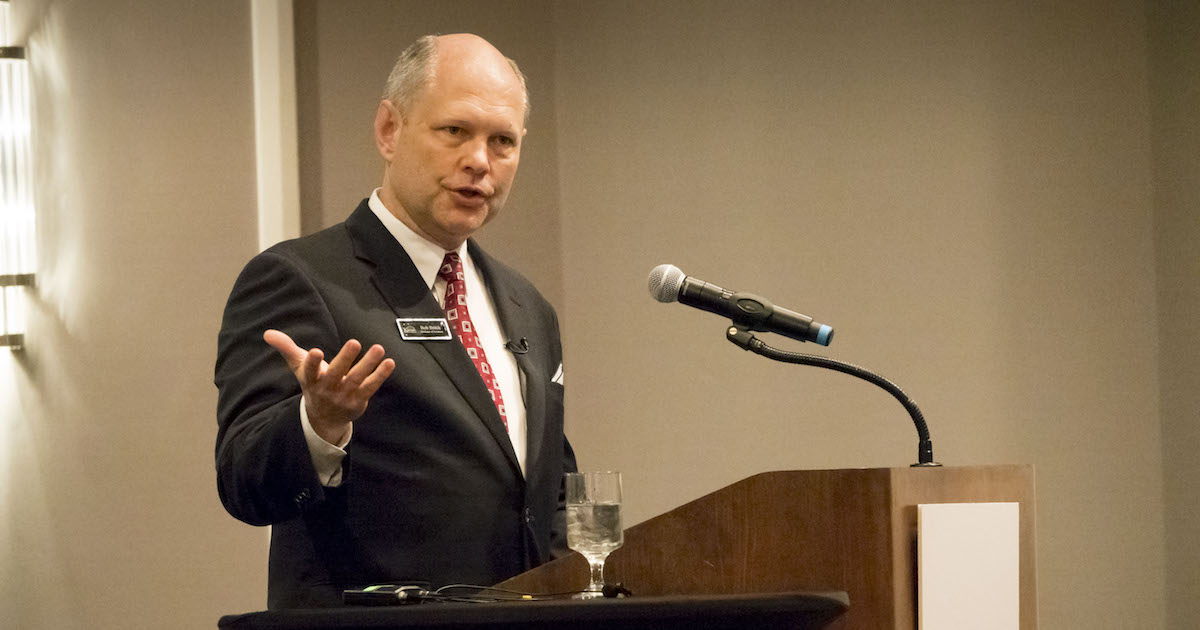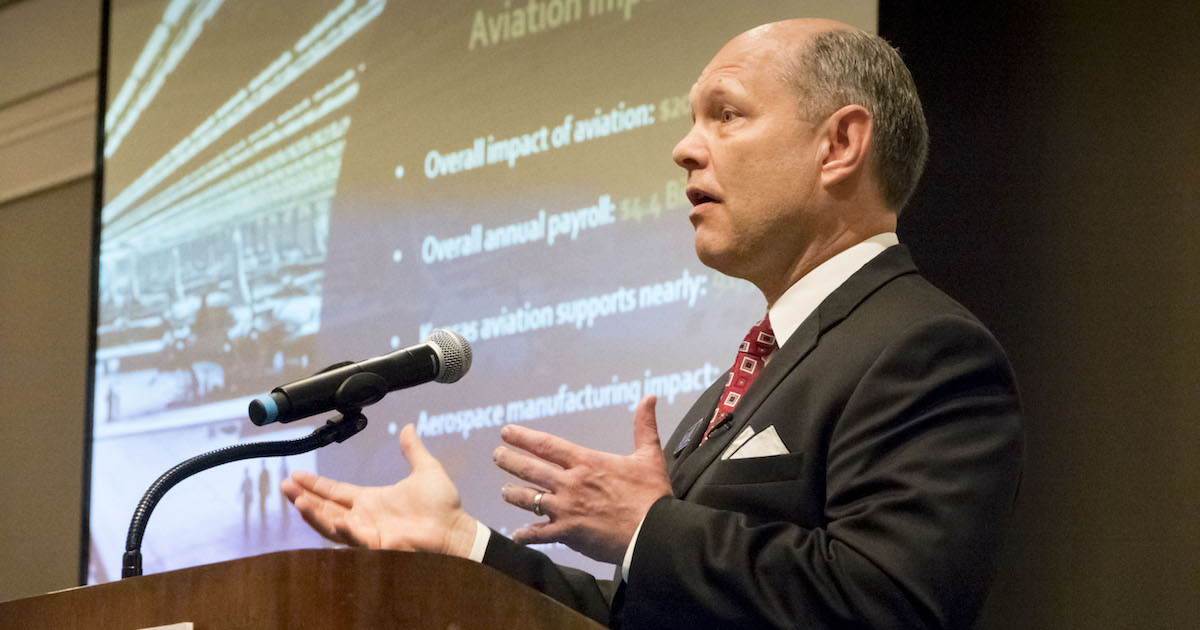Economic Development Focus of Kansas Aviation Director
05.03.18 · Ashley Bowen Cook
It’s not enough to have oversight of the state’s 138 public-use airports and 125 miles of airport runways. Not enough to tackle workforce development and pilot shortages. Not enough to make sense of shifting regulations and big data. At the monthly meeting of the Wichita Aero Club, new Kansas Department of Transportation Director of Aviation Bob Brock said his department must foster economic development.
He shared ideas about how that could be done and urged attendees to tell him openly and honestly what they thought. He encouraged the crowd of area aviation professionals to act as an ad hoc focus group.

Aviation Pride and Possibilities
Brock reminded us of Kansas aviation’s $20.6 billion economic impact through manufacturing, jobs and airports. What impresses him most: that our region manufactures three out of every four small aircraft. “That’s kind of a big, dang deal,” Brock said.
As the state’s previous (and its first) director of unmanned aircraft systems (UAS), Brock focused on the changes drones are bringing to aviation. Twice as many drones are registered in Kansas as aircraft. Drone usage is growing exponentially, not linearly. Love them or hate them, aviation needs to make peace with UAS – and leverage the possibilities they present.
Brock hopes to see Kansas rank in the top 10 states for UAS integration benefits by 2025. These include 3,700 jobs and a $2.9 billion impact. He knows there will be challenges. Technology currently exceeds regulations, safety practices and aviation standards. Kansas needs skilled aviation workers, more public-private coordination, and innovation investment.
“Kansas helped create aviation as it is today and can do so again,” said Brock.
He provided multiple missions – from search and rescue to bridge inspections – that could be done faster, cheaper and more accurately with drones and their sensors than by humans and outmoded tools.
Driving Innovation Through Research and Training
Brock introduced the Kansas Aviation Training and Applied Research Academy (KATARA) that he’s envisioning. Currently, it’s a concept only. He shared enthusiasm for the state’s latest initiative for aviation workforce development and job creation. It would link 32 training organizations into a single standardized training network to meet the needs of the aviation industry.
When does Brock hope to launch KATARA?
“I want it yesterday,” he said, acknowledging the need to act quickly. “Other states are working on this.”
Time will tell who makes it happen first, but Kansas is home to an aviation community unlike any other. Stay tuned.
 KDOT Director of Aviation Bob Brock served 22 years as an Air Force pilot and UAS squadron commander, retiring as a Lieutenant Colonel. His experience in unmanned aircraft systems includes postings in intelligence and special operations units utilizing drones. Photo courtesy of Visual Media Group.
KDOT Director of Aviation Bob Brock served 22 years as an Air Force pilot and UAS squadron commander, retiring as a Lieutenant Colonel. His experience in unmanned aircraft systems includes postings in intelligence and special operations units utilizing drones. Photo courtesy of Visual Media Group.
This column originally appeared in the May 3 issue of BlueSky News.
